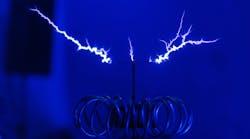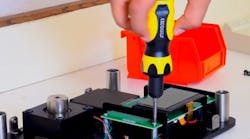Static electricity can be described in a number of different ways, but it is, essentially, electricity stuck in one place. In a normal electrical circuit, charges that form an electrical current move through a closed circuit in order to do something beneficial, like powering a computer or the lighting in your house. In these circuits, the charge always returns to the source from which it has been supplied. Static electricity is different. Because it is not part of a closed circuit static electricity can accumulate on plant equipment ranging from road tankers to flexible intermediate bulk containers.
Although static electricity is generally regarded as a nuisance, in the hazardous process industries it can become an ignition source. Discharges of static electricity have been identified as the ignition source in a broad range of processes. It is as potent as sparks resulting from mechanical and electrical sources, and yet, it is often underestimated, either due to a lack of awareness of the risks it poses or because of neglect and/or complacency.
Various guidelines referred to in this handbook can provide more detail on these processes. It should be noted, however, that not all processes at risk of electrostatic discharges can be highlighted in a single document.
For professional advice on electrostatic hazard identification please refer to specialist consultants or internal hazardous process experts within your company. Newson Gale does not provide such services and focuses solely on providing customers with grounding and bonding hardware solutions for applications that have been identified at the site.
What's Inside:
- Static electricity as a hazard, legislation and codes of practice
- The basics of the hazard
- Real-world scenarios
- Grounding & Bonding applications: Operator Training General Requirements
- Increased Layers of Protection
- Static Ground Monitoring & Interlock Systems: Earth-Rite Range
- Grounding a tank truck with system interlocks and indication: Earth-Rite II RTR
- Grounding railcars, IBCs, and drums with system interlocks and indication: Earth-Rite II PLUS
- Dual grounding of two independent plant items: Earth-Rite DGS
- Vehicle drive-offs: Break Away Connector
- Truck-mounted static ground verification with system interlocks and indication: Earth-Rite II MGV
- Hose testing and electrical continuity testing with visual indication: OhmGuard
- Grounding interconnected plant assemblies and piping with system interlocks and indication: Earth-Rite MULTIPOINT II
- Protecting Type C FIBC against static electricity: Earth-Rite FIBC
- Panel-mounted grounding with system interlocks: Earth-Rite OMEGA II
- Dual-core static ground monitoring and interlock systems: Dual Core Clamps Range
- Grounding closed-topped drums and containers: Magnetic Clamp & Surface Mount Connector
- Passive vs active grounding
- Self-testing clamps with visual indication and monitoring: Bond-Rite Range
- Grounding and bonding drums and containers with visual indication: Bond-Rite Range
- Static earthing clamps, cables, and personnel safety equipment: Cen-Stat Range
- Grounding drums and containers: Cen-Stat Clamps
- Personnel grounding with grounding straps: Personnel Grounding Strap
- Personnel Footwear Tester with Visual Indication: Sole-Mate II
- On-going maintenance of static control procedures and equipment
- Safety checklist
- Timeline
- Good reasons to specify ATEX & FM approved clamps






